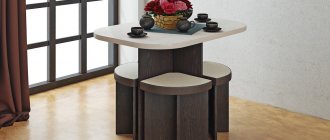Selecting a heating method
Heating system
The choice of fuel used for heating, as well as the system as a whole, depends not only on personal desire, but also on the characteristics and limitations of the area in which the building is located. To make it easier to decide, it is important to answer the following questions:
- Has a gas line been laid?
- How expensive is it to connect to it?
- Is it possible to deliver liquefied gas and how much will it cost?
- Does the system already exist?
- What is the planned budget?
- Is it possible to supply three phases to the house?
- Are there limits or other restrictions on the use of any media?
- Is delivery of solid fuel possible and what is its cost?
- How often do you plan to use the house during the cold season?
- Will the hot water supply be connected to the heating system?
These questions will allow you to roughly draw up a plan of action and narrow down the direction of your search. The first step is to decide which boiler you will purchase.
How to make heating in a private house
To begin with, we will briefly list the main steps that will need to be completed on the way to achieving the goal:
- choice of heating system;
- selection of heating system components;
- calculation of heating of a private house;
- development of an individual heating scheme;
- registration and obtaining permits;
- heating system installation;
- test run of the system.
It is important to adhere to consistency, because... phased implementation of the project eliminates errors that are difficult or expensive to correct.
Boiler selection
Solid fuel boiler
Depending on what is the power source for the central device of the entire system, the following types of boilers are distinguished:
- gas;
- electric;
- solid fuel;
- on liquid fuel.
Gas boilers are currently one of the most economical. The difference in consumption compared to other species can be up to tenfold. According to the installation location, the following are distinguished:
- floor;
- wall-mounted
Gas wall boiler
The first ones are usually used in cases where there is a separately built boiler room and it is necessary to heat a large area. The second type has a more aesthetic appearance and is easy to install even in the kitchen. But the maximum power of such products is limited.
According to the method of exhaust gas removal there are:
- Turbine type. They have a built-in engine that provides forced air exchange inside the combustion chamber. Products of this type do not require a large pipe mast.
- Chimney type. In such units, carbon dioxide and other substances are removed through a channel that rises to the required height.
Heating boiler with chimney
What to choose from these two options will depend on whether there are already installed chimney ducts. If they meet all the requirements, then the second type is perfect. The advantage is that there is no need to punch a hole outward. The big advantage of boilers with a turbine is that they almost never have problems with draft. Even in bad weather, lighting the burner will not be difficult.
Heating devices also differ in the number of heat exchangers that are present in the design. For those boilers that have the ability to heat running water, two chambers are provided. One of them provides heating of the system carrier, and the second - water for the bath and sink. Also, combustion chambers can be of two types:
- open;
- closed.
With open and closed combustion chamber
In the first case, clean air, which will promote combustion, is taken directly from the room in which the heater is located. Air enters the closed chambers through a double pipe. Gases are removed through one sleeve, and inflow is carried out through the second. The last option is considered more reliable, because carbon monoxide has no way of entering the room and poisoning the occupants.
In addition to the fact that the boiler is connected to the gas supply system, it can also be:
- Volatile. It implies the presence of modules such as a circulation pump, an automatic ignition system, and a special type of valve that shuts off the fuel supply in the event of an unforeseen situation. Definitely needs a backup power source. Otherwise, with a long absence of electrical energy, there is a possibility of the entire system freezing.
- Non-volatile. This option is much easier to maintain and connect. But if it fades, you will have to restore its functionality manually.
A gas boiler
A large amount of condensate is released along with the exhaust gases. Depending on how the device behaves with them, the following are developed:
- capacitor devices;
- convection type devices.
In the second case, only the efficiency of the combustion gas is used to heat the water in the circuit. In the first option, energy is also taken from the condensate. Before the liquid from the system enters the main heat exchanger, it is heated by the settled vapor. This variation costs a little more than the classic one, but during operation the savings reach almost 17%.
Most often, gas boilers are universal. This means that they are capable of operating on both methane and propane-butane. In most cases, it is enough to simply replace the injectors (or jets) with the required ones.
Heating with electricity cannot be called economical, but in some cases there is simply no way out, so you have to be content with it. Based on the principle of interaction with liquid, there are several types of boilers.
Having heating elements . In them, water is heated due to its direct contact with the tubular element. The positive side of such structures is their ease of repair. All that may be required is to replace one of the components. The disadvantages include a high probability of scale formation, which can clog the entire system and significantly reduce performance. For example, in the absence of planned maintenance, over 10 years of operation, efficiency drops approximately threefold.
Electric boiler design
Induction . A relatively new development, which has inspired many to develop their own schemes and assemble such boilers at home or in the garage. Structurally, they are a system of coils. They are surrounded by guides. During operation of the coil, inductive currents are generated that heat the core, which subsequently transmits the temperature to the liquid. The advantage is almost zero scale formation. Efficiency does not decrease over time.
Induction
Electrode . The essence of the functioning of devices of this type is that electrodes are placed directly into the liquid, which cause it to heat up. You cannot use antifreeze liquid, because... The efficiency of the system depends on the salt balance, which is selected for specific conditions. The advantage of such solutions is their compact size, ease of installation, gradual heating and interaction with the entire volume of the media at once. During operation, it will be necessary to maintain a suitable circulation current. After a certain period of time, it is necessary to replace the electrodes, because they simply dissolve due to the reactions taking place.
Electrode boiler
Note!
All these boilers can be either three-phase or single-phase. This is usually determined by the power output. As a rule, those whose indicator exceeds 12 kW require a voltage of 380 V.
Solid fuel boilers have been used much longer than electric and gas boilers combined. Even an ordinary stove with a coil built into it, which heated the circulating water in the system, could be considered such. Fuel for such units can also be of various types.
Wood-burning . For all processes to proceed, it is enough to load the required amount of dry logs. The advantage is the availability of the material. Almost anything that burns can be used, as long as it concerns the simplest models.
Wood-burning
Pellet . They operate on special fuel pellets, which are produced by pressing various components. The composition may include sawdust, peat, agricultural waste and others. They have a rather complex design and some capriciousness in maintenance. Also, the cost of purchasing fuel is slightly higher than the previous option.
Pellet boiler
Peat . Peat briquettes are used to maintain the temperature. Distributed in areas where this material is easily available.
Coal . They involve the use of both coal and charcoal. The advantage is a fairly large interval between loadings and a high combustion temperature. Among the disadvantages, we can note the need for more frequent maintenance of smoke exhaust ducts.
Carbonic
The loading issue can be resolved in two ways: automatic and manual. The first option involves filling a specially prepared container, from where raw materials are mechanically removed to maintain combustion. In this way, everything can be ensured so that user intervention is required once every day or two. Regarding the manual method, the maximum interval that was achieved was once a day. This is a little inconvenient if you need to leave for a few days or longer. There must be someone who can take care of this matter.
In addition to conventional units that use the heat generated due to the combustion of raw materials, there are those that additionally use the resulting gas. They are called pyrolysis. The essence of the processes occurring inside is that after loading and the start of the combustion process, the access of oxygen decreases. At high temperatures, the firewood simply begins to smolder. At this time, pyrolysis gas is released. Thanks to the installed nozzle, it is supplied to another chamber, where it is mixed with oxygen. As a result, it also begins to burn, releasing a large amount of heat. The advantage of this solution is high efficiency, up to 90%. Also, compared to a conventional device, loading is required half as often. One of the disadvantages is that there are high demands on the quality of the logs that must be used. The cost of such a boiler is quite high.
Operating principle of a pyrolysis boiler
Note!
Modern devices are equipped with automation that regulates the heating temperature of the medium. This is achieved by reducing or increasing the air supply. If the choice falls on a solid fuel boiler, then an obligatory step is to install a protective system. The fact is that they are quite inert and cannot be stopped instantly. If an accident occurs in a section of the circuit or the pump stops, then urgent measures will need to be taken. This addition comes in several types: a heat exchanger with circulating running water, a buffer tank, or an additional circuit with natural circulation.
Liquid fuel boiler design
Some opt for boilers that run on liquid fuel, this can be diesel, waste oil, biofuel, etc. Such units are highly efficient, but they can hardly be called economical. There are two varieties:
- only on liquid fuel;
- liquid fuel plus gas.
In the second case, to change raw materials, another burner is simply installed. This solution will be relevant in cases where the connection of the highway is expected soon. But experience shows that the purchase of two full-fledged units that operate on different fuels will cost the same price or a little more.
The normal operation of these boilers requires the constant availability of electrical energy. This is explained by the fact that the main element is a special nozzle, which regulates the supply of fuel to the cylindrical combustion chamber. A water jacket is mounted around it, in which heat exchange occurs. Simultaneously with the diesel engine, the fan is activated, which pumps air. The feed level is varied by a servo-driven damper. At the initial stage, it is necessary to heat the raw material to 50°; for this, a heating element is used. The electrodes that create a spark act as an igniter. All these modules require a network.
Diesel boiler
Another feature that stops some buyers is the need for an adequate supply of fuel. If the boiler is located directly in the house, then storing 50 liters of diesel fuel is allowed. If you need to have large capacity containers, you will have to think about additional space and tanks. At the same time, it is important to provide a fire safety system so as not to suffer huge damage at a critical moment. The consumption for a 15 kW boiler at maximum power in the cold season is approximately 2.5 kg/hour.
Note!
As with solid fuels, there are capacitor options. They also extract heat from the accumulated liquid while cooling the exhaust gases.
As an alternative, you can consider solar energy. To convert it into heat, special solar collectors are used. They can be:
Flat solar collectorFlat. Mineral wool is used as insulation. It is located on the back side of a metal plate, which is covered with a special absorber. It is necessary to increase the level of absorption of sunlight. In direct contact there is a coil through which water circulates. The plate transfers the temperature of the liquid, and it transfers it to the storage tank. The disadvantage is the relatively low efficiency in the cold season.
- Tubular vacuum. Structurally, they consist of a metal frame into which glass vessels are mounted. The air has been pumped out of them. This is done in order to reduce heat loss. Vacuum is a good insulator, so the system can function even at temperatures down to -30°C.
Tubular manifold
If you choose this type of heating device, the main costs will go to its purchase and installation. But later you won’t have to pay a penny for the opportunity to use heat. To increase efficiency, catchers are mounted on rotating stands. Sensors track the position of the sun and constantly turn the absorber towards it. Additionally, a heating element can be installed in the storage tank. It will be needed in situations where in the evening you want to use up more water than has been accumulated.
Note!
The general rule for selecting boiler power is 1 kW per 10 m2 with a standard ceiling height of up to 3 m.
How to choose the right type of heating device?
As a rule, a country house is equipped with everything necessary for living, including a heating system during the cold season for a comfortable pastime.
For reference! Stove heating can heat only a small building. In addition, warm air spreads throughout the rooms unevenly and for quite a long time.
Therefore, when choosing a heating device that can provide heat to the entire building, many criteria are taken into account, but preference is still given to boilers operating on various energy sources.
Types of boiler devices
A gas boiler.
Diesel boiler.
Electric.
Solid fuel.
Depending on the fuel consumed, several types of boilers can be distinguished, which have their own advantages and disadvantages. These include the following types of structures:
- Gas. This type of device is considered one of the most economical and easy to install. However, not all owners of country houses have the opportunity to connect to the gas mains.
- Diesel. The design of this design is also not difficult to use. The device runs on liquid fuel, which can be purchased without any problems. One of the significant disadvantages of this type of boiler is the unpleasant characteristic odor from combustion products.
- Electric. One of the most preferred devices for heating a country house, since its installation does not require the construction of a boiler system. But at the same time, many owners note that the use of such a device entails significant costs during its operation.
- Solid fuel. This type of heating device involves the use of solid fuel for operation. Compared to analogues, a solid fuel boiler has the highest efficiency.
Gas and diesel boilers are considered the most suitable heating options for a country house, as they are able to operate autonomously. They are practical and reliable in operation. When installed correctly, natural gas and diesel-fuelled structures can provide uninterrupted heat to a building for several weeks without intervention.
Selection of main nodes
Once the choice has been made on one of the thermal energy generators, it is time to determine what to use as conductors through which the liquid will circulate. There is a fairly large selection of pipes.
Metal . This is a classic of the genre. They have been installed and continue to be used in the implementation of a large number of projects. Very accessible material. It's easy to choose the diameter to suit your needs. Located in the above average price category. One of the positive aspects is the heat transfer along the entire length. The disadvantages are a high level of susceptibility to corrosion, the need for constant maintenance, painting, etc. In order to mount a system from them, you will need skills in working with a welding machine.
Metal pipes
Metal-plastic . Consist of several layers. The inner one is polyethylene. It is quite elastic and flexible, and also withstands pressure changes well. The stabilizing layer is aluminum foil. It is glued to the inner sleeve. Another layer of polyethylene is applied on top. The advantage of this solution is its resistance to corrosion and the difficulty of silting, because the inner wall is very smooth, long service life, ease of installation, as well as freedom in choosing the configuration. The product is supplied in coils of 50 m.
Metal-plastic
Polypropylene . Plastic pipes, which have become very popular and widespread. This is due to the relatively low price, as well as ease of installation. Their service life is very long, because the material they are made of does not interact with water. The disadvantage is the possible narrowing of the lumen at the soldering points.
Polypropylene
Made from cross-linked polyethylene . Most often used for laying heated floors. They have all the advantages of metal-plastic and polypropylene pipes. In addition, they have no narrowing at the joints.
Cross-linked polyethylene
Copper . They will be quite expensive. The advantages are long service life, corrosion resistance and environmental friendliness. Installation can be carried out by soldering or crimping. A beginner can handle both the first and second methods.
Copper
In addition to pipes, you will need radiators. In some cases, heating can be implemented without them, but this will be discussed a little below.
Cast iron . These are ordinary batteries. Their advantage is a long heat transfer time. Even if the system stops functioning, the emitters are still able to warm the air for some time. The disadvantage is the large weight, as well as the need to circulate an increased volume of liquid. This leads to additional fuel costs when heating. Such elements can be easily purchased used at a low price.
Cast iron radiator
Steel . They feature a well-thought-out design that requires a significantly smaller volume of liquid. The internal space is designed in such a way as to ensure air movement according to the principle of convection. Cold masses rise and, passing through the radiator, heat up. Continuing movement, they provide annular movement, so uniform heat exchange occurs. There are various configurations that are selected for a specific room.
Steel
Aluminum . Structurally, they resemble cast iron batteries, because also consist of separate sections, which can be added or removed if necessary. The most durable option would be bimetallic products that resist corrosion from salts. They provide the same method of heating the air as the previous option. They are made in two ways: casting and extrusion. In the second case, two components are squeezed out with a press, which are then welded into one section. The appearance and height can be selected according to the interior of the room.
Aluminum radiators
Heating baseboard . It can act as an independent heating unit only where the winter temperature does not drop much below zero. In other cases, it is mounted together with a heated floor. It is a copper tube on which plates are strung. The advantage is its compact dimensions, as well as the ability to hide the product behind a decorative overlay. The length can be selected as needed, because... assembly is carried out from separate modules.
Heating baseboard
Finned tubes . Now they are practically not used. But they can be used in basements and utility rooms. They are metal or aluminum pipes with plate rings placed on them, which increase the heat transfer area.
Note!
Even earlier, ribbed cast iron pipes were used. Nowadays such products are very difficult to find.
Ribbed cast iron pipe
In addition, you also need to purchase an expansion tank. Its design will depend on what type of system is planned for installation. For greater savings, some consumers install thermal heads on emitters. This allows you to save significantly by setting the required temperature for each radiator. If their installation is not provided, then corner taps will be needed.
Circulation pump in the system
The circulation pump requires a careful approach. It is important to ensure that it has sufficient power and is also designed for a specific area. For a one-story house, a unit with index 4 is enough, for a two-story house – 6 or more. Only in this case can one guarantee its ability to push through all the joints.
Pump installation rules
Single-pipe wiring diagram
According to the method of movement of liquid in pipes, all schemes can be divided into:
- Passive or gravitational. In this case, circulation occurs due to physical laws. Hot water has a lower density, so it rises, while cold water, on the contrary, sinks. The advantage of this solution is independence from energy sources. Among the disadvantages is the need for large diameter pipes. Usually metal ones are used, less often polypropylene ones, which are selected in accordance with the declared dimensions. In addition, if airing occurs, then eliminating such a plug is quite problematic, and heating of this area will definitely be stopped. During installation, you will need to observe the slope of the conductors.
- Active or forced circulation. When designing, a pump must be provided, which ensures the flow of water from the boiler to the radiators, and vice versa. There is no need to use large diameter pipes. This option is the most common today.
- Combined option. In this case, part of the liquid circulates through the circuit forcibly, and part by gravity.
Options for single pipe systems
A single-pipe system is also called a sequential system. Its essence lies in the fact that all radiators are connected to each other by one pipe. The entry is usually made at the top point, and the exit at the bottom. In this case, a bypass is created under the heat exchanger. It is necessary so that in the event of a battery failure, the system continues to function normally. But it is important to narrow its diameter. Water will always follow the path of least resistance and it should pass through the emitter, and not the bypass pipe. The advantages of this solution are:
- lower material costs;
- relative ease of installation;
- looks neater than a two-pipe one;
- less effort if necessary to hide pipes in a groove.
Some negative sides are:
- uneven heating of radiators;
- the predominant condition for the presence of a pump;
- the importance of maintaining pressure within the system.
Heating schemes for a two-story building
At the moment, there is a heating scheme for a two-story house with a double-circuit boiler and with a single-circuit boiler. The last option is simple.
Single-circuit boiler
The essence of single-circuit wiring is as follows: the coolant moves from the boiler along the line to the batteries, and returns back to the boiler. In terms of pipe use, this option is more economical. But the coolant reaches the last radiators already cooled. To get out of this situation, some install additional sections, thereby increasing heat transfer.
Heat can also be balanced using shut-off valves that regulate the flow of water into the first heating units. Also, a single-circuit heating system whose circuit does not ensure uniform heat distribution throughout the room can be supplemented with circulation pumps.
Double-circuit boiler
If a single-circuit circuit allows only to heat the room, then a double-circuit gas boiler circuit also provides water supply. This is an ideal option that allows you to save both space in your home and money.
The horizontal type of connection of a double-circuit boiler can be made in the following options: with manifold distribution, with associated movement, dead-end circuits. Parallel connection of thermal boilers is also distinguished. I must say that the heating scheme with two boilers is very convenient. True, it cannot always be called expedient. It is worth remembering that the boiler heating scheme requires a competent approach.
It is important to choose the most suitable option for heating your home, taking into account the availability of fuel and material capabilities.
A variation of the two-pipe system is the Tichelman heating scheme. This is a return heat supply system with reverse. Popularly, the Tichelman heating scheme is also called three-pipe. The circulation circuits in it are balanced. This is the most favorable option for the coolant. This scheme ensures uniform heating. Of course, there are some disadvantages. For example, greater pipe consumption than with a dead-end installation. The scheme is suitable for houses with a small area.
Alternative heating
Recently, when organizing heating of a two-story house, engineering developments of climate systems that operate on alternative energy sources are often used. In this regard, the most promising is the thermosyphon heating system, the scheme of which involves the use of sunlight and consists of solar collectors, a special heat exchanger and connecting lines. True, such devices are not suitable as the main source of heat, since the generated thermal energy is simply not enough to heat the entire house.
Two-pipe distribution system
Scheme of a two-pipe heating system
In many nuances it is more productive than the previous one. Its essence lies in the fact that each radiator is simultaneously connected to two conductors - to the supply and return current. It can be mounted in the following ways:
- Horizontal. In this case, all channels are located in a horizontal plane. Most often used in small residential buildings.
- Vertical. Typically used in multi-story buildings. The essence is the presence of a vertical riser, from which branching is carried out into radiators of each level.
- Top positioned. The supply pipe is located under the ceiling or above the radiator. It is in this way that it is possible to organize a gravitational type of circulation. In this case, it is necessary to maintain the angle of inclination.
- With a lower location. Two pipes are located next to each other under the diffusers. This saves space, but will require a pump to ensure uninterrupted flow of liquid.
According to the method of interaction between the supply and return pipes, the following are distinguished:
- A related scheme. In this case, both circuits operate independently of each other. The return pipe comes out of the first radiator and forms its own mini-circuit. All the diffusers are connected to it, and it returns to the boiler.
- Dead end scheme. The reverse current and supply are looped in the last emitter, and the water is returned for heating.
Dead-end and passing schemes
The positive aspects of this type of wiring are:
- uniform heating of the entire area;
- ease of repair work;
- cleaning the radiator without stopping heating;
- fewer restrictions on the number of radiators in one horizontal section.
There are also negative sides:
- greater material consumption;
- greater volume of circulating water;
- certain complexity of installation;
- the need for scrupulous calculations.
Open expansion tank
According to the method of interaction with the atmosphere, the circuit can be open or closed. The difference lies in the internal pressure and the type of expansion tank. For the second type, a product with a membrane is used. A constant pressure is maintained inside such a container. During heating and expansion, the excess is drained into the tank, after which the membrane later pushes it back out. In the first option, the container is open, and there is no clearly maintained pressure value inside the system. This is usually typical when using boilers with a simple design.
Diaphragm expansion tank diagram
Note!
A separate subtype is the collector wiring system. But it is more of a branch of the two-pipe system. Its essence lies in the fact that a special unit is installed - a comb. It has many exits. Hot water is supplied to it from the boiler, and from it the liquid is already transported to radiators and other consumers. It returns to the same device, but only it is connected to reverse current.
Double-circuit heating system
A two-pipe heating system for a summer residence requires greater material consumption and, accordingly, labor costs. Its main difference from the one described above is the use of two circuits, one of which supplies hot coolant simultaneously to all heating devices, and through the second the liquid moves back to the boiler. Thanks to this scheme, heating of all rooms of the house is carried out evenly. The main features of installing such a system are as follows:
- We lay pipes of both circuits along the entire perimeter of the house.
- Using tees, we remove a piece of pipe from the supply (hot) circuit to each heating device and connect it to the upper (inlet) hole of the radiator.
- We also take a piece of pipe from the outlet of each radiator and connect it with a tee to the return (cold) circuit.
Thus, the cold circuit begins at the first heating device and ends with a connection to the circulation pump, and the hot circuit pipe begins at the tee at the heating boiler and ends with a connection to the inlet of the last radiator.
Main stages of installation
Heating boiler installation
After all the necessary materials have been purchased, the boiler and all locking mechanisms have been selected, installation can begin.
- A location for the boiler is selected. If it is a system with natural circulation, then care must be taken that it is at the lowest point. A basement is perfect for this.
- The heating device is installed. Gas is supplied to it, but is not connected until the launch is completely ready. Electrical network wires are also installed.
- According to the drawn up diagram, heating radiators are mounted. If the process occurs in conjunction with repair work, then the packaging cannot be removed so as not to damage the surface of the products.
Laying heating pipesPipes are being laid. Where exactly to start is the choice of the installer. You can move both from the emitters to the boiler, and vice versa. In the case of passive circulation, the supply pipe should have a diameter of 1½”–2″. This is required so that hot water can freely rise and move to the heating devices. Compliance with a slope of 3° per 1 m of length is also strictly regulated. For solutions with forced liquid flow, as a rule, a ¾" pipe (25 mm plastic) extends from the boiler, and a ½" (20 mm plastic) pipe runs from it to the radiators.
- Before connecting to the radiators, taps and thermal heads are screwed in. Threaded connections should be well sealed to prevent leaks. When using plastic, it is better to use adapter threaded couplings instead of soldering a ready-made radiator valve.
- In the case of an open system, the expansion tank is mounted at the highest point so that air can collect there and escape. There is no such rule regarding closed ones; the membrane mechanism is embedded near the boiler.
Mayevsky tap on the radiatorEach emitter must be equipped with a Mayevsky tap. This is done in order to release the air lock at any time. Modern boilers are already equipped with dumpers, but bubbles do not always reach them.
- The connection to the boiler must be tight.
- If a circulation pump is not provided in the boiler, then it is mounted in the return pipe. If you plan to distribute with natural circulation, but you also want to have such a device, then it is connected with a bypass and cut off by taps. Another locking mechanism is placed on the jumper below it.
- Before the test run, all circuits are tested. To do this, compressed air or water is used, the pressure of which rises to a value several times higher than the working one. In this case, it is important to close the valves that are installed on the heater, because all excess will go through the dump. In this situation, you need to wait a day. If after this there are no leaks or fistulas anywhere, you can perform a full switch-on.
Starting the heating system
Note!
If the system is planned to have several circuits, then there may be a large temperature and pressure difference. To prevent this from happening, it is important to provide a hydraulic arrow. Its task is to provide a kind of decoupling - delivering liquid to the exchanger, from where it will be used by pumps for other branches.
For more information on connecting the boiler to the heating system, see below:
Steam heating
Steam heating still remains popular. The central device is a special boiler, which can be powered by one of the types of fuel mentioned above. The advantage of such a system is:
- quick start and warm-up;
- no danger of freezing, because no circulating fluid;
- heat transfer by convection from radiators, as well as radiation in the infrared range;
- high efficiency.
Steam heating circuit
The big and main disadvantage is the strong heating of both the pipes themselves and the heat exchangers. If one of the components breaks, you can get severe burns. But engineers have achieved a reduction in the temperature at which the liquid turns into a gaseous substance. To do this, a rarefied pressure is created inside the pipes. The principle of installation and wiring is similar to those described for water structures. There are two more subspecies that are typical only for steam units:
- Closed-loop implementation. Its structure resembles a one-pipe or two-pipe system with dead-end wiring. This means that after passing through all points, the steam condenses and flows down the return pipe.
- Open-loop implementation. In this case, after settling, the liquid is collected in a special vessel, and from it it is pumped into the boiler using a pump.
No type of plastic pipe is suitable for installation. You will have to choose galvanized, metal or copper derivatives.
Heating schemes for a private house
There can be an endless number of options for heating systems in a private home. In each project, the offices add something of their own. If the heating is done by the residents themselves, then there may be completely unusual schemes. But there are classic, proven examples of heating systems that are recommended by independent experts. The schemes provide for savings and at the same time ensure long-term and high-quality heating operation. The following is a selection of various heating schemes with a consideration of the nuances of operation and the specific benefits that the creator can receive in a particular case.
What is used in most cases
First of all, the owners are interested in the general wiring diagram around the house. There are mainly 4 options used here.
- Dead end scheme.
- Hitch ride (Tichelman loop).
- Collector wiring.
- Leningradka - was made en masse before, and is still in use.
Gravity heating stands apart, created independently with a wide variety of pipe combinations - as long as the water moves under its own weight.
How is the general scheme divided?
But you need to take into account that the general scheme includes a number of special areas that can be replaced by others without much impact on other heating areas. The following are highlighted.
- Boiler piping.
- Radiator piping.
- Connecting radiators.
- Warm floor diagram.
- Heating distribution throughout the house.
- Connection and control of DHW.
- Equalize the pressure with a hydraulic arrow or rings.
- Buffer tank piping.
Is a complex diagram useful or should it be simplified?
The principle that the owner of the house should follow when creating heating is to simplify everything and make it cheaper, but of course, not at the expense of quality. In our realities, hired installers strive to make everything more expensive and complicated; this is their direct income.
The most fundamental issue when installing heating in a private house remains the need to create separate separate circuits with pumps within the general circuit. Installers will be happy to power at least each radiator with a separate pump. And all this will be reduced to the hydraulic arrow, since it will become necessary.
How is the issue of simplifying the heating circuit resolved? Is a hydraulic arrow or another complication needed?
When complex schemes and hydraulic arrows are used
- If the system is ordinary, there are three circuits - radiators, heated floors and an indirect heating boiler, then, as a rule, there is no need to equalize the pressure between anything, there is no need for a hydraulic switch, the system is mounted as a simple connection.
- But if there is also a circuit with a separate pump that turns on periodically (for example, heating a dog kennel), then its action may disrupt the operation of other circuits. The pressure between the circuits is equalized by introducing a hydraulic arrow into the circuit or using a scheme of primary-secondary rings.
- A hydraulic arrow is also installed if two or more boilers are operating at the same time.
Hitch or Tichelman loop
Universal heating system based on area. Very stable, giving the same temperature to all radiators. But it requires the same large diameter of the pipes in the ring, and also approximately the same hydraulic resistance of all radiator branches, otherwise irremovable cold zones arise. Due to the large diameter it is more expensive. The second obstacle to use is the need to close the ring around the house, which is difficult to do when hanging pipes on the walls - you need to go around the door from below or from above. If the pipes are located underground, there are no problems.
Collector circuit
It is used less frequently, as it requires the collector to be located in the center so that the beams are approximately equal, which is not always feasible. The second difficulty is the combination with a warm water floor, since it is sometimes difficult to lay pipes along the wall from the central collector. But the system is stable after fine tuning with control valves on the central manifold.
Dead ends
The most favorite scheme for installers remains the dead-end one, which saves everything. But it is not recommended to include more than 5 radiators in one dead end, so as not to deepen the balancing. Applicable everywhere.
Leningradka
One pipe should supply all radiators with energy so that their temperatures do not differ significantly. This is feasible for small circuits with up to 4 radiators. Under normal conditions, single-pipe systems suffer from the difficulty of setting up, a large waste of energy for increased circulation, and high cost due to the large diameter of the pipes. The scheme was previously used widely with large-diameter steel pipes. Now it is inferior to modern schemes in everything, it is beneficial only in production in large workshops.
Gravity heating
It is known that liquid will circulate through the system if the heating point is lower than the cooling point. The boiler heat exchanger must be lower than the middle line of the radiators - installed in a pit. If this is not observed, then a high, voluminous upper distribution pipeline is made, which releases a lot of energy, while the cooling point moves upward. And the pipeline configuration can be very diverse. The creation condition is the largest pipe diameter, usually from 40 mm, and radiators and boiler with low resistance. The system is much more expensive to create, besides it is not comfortable, nothing can be connected to the pump - the floor, hot water supply, remote floor...
Radiator piping and connection
Radiators need to be connected so that the liquid moves diagonally through them, then the heat transfer is greatest. A return-current connection is also acceptable for radiator lengths up to 1 meter.
The piping must include at least two shut-off valves and an air bleed valve. In schemes where balancing is needed, a balancing valve is introduced instead of a tap, and in systems with an automated boiler, it is possible to install a thermal head with a valve instead of a second tap, which makes it possible to quickly control the temperature in each room.
Solid fuel boiler piping
The piping circuit of a solid fuel boiler must contain a three-way valve, which will not allow cold coolant to enter the hot heat exchanger, i.e. will prevent an accident. The second point is redundant power supply to the pump - a prerequisite for the operation without accidents of both the boiler itself and the heating system. How should a solid fuel boiler be tied:
- A bypass is installed between the boiler supply and return with a three-way valve, which is controlled by a thermal head based on the return temperature. If it is below 55 degrees C, then mixing occurs directly from the supply to the return.
- A thermal relay is installed in the boiler itself or at its outlet, which controls the operation of the pump. When the temperature at the boiler outlet drops below 35 degrees, the pump turns off to reduce the cooling of the coolant through the heat exchanger, which is blown onto the chimney. When combustion in the boiler resumes, the pump should be turned on by this relay.
DHW connection
It is important that an indirect heating boiler is the most comfortable and cheapest way to prepare hot water in a private home. If the boiler is automated, then, as a rule, it can control the boiler and is provided with access to the boiler. With a non-automated boiler, you will have to create a piping, possibly based on a three-way valve, to turn on the boiler.
Common heating scheme
Below is the simplest, but very common scheme, which includes comfortable hot water supply. . The heating system is a dead-end system, with maximum savings when created on the basis of a solid fuel boiler.
Complex circuit with buffer capacity
Heating with a solid fuel boiler will be more comfortable if you use a buffer tank. In most cases, you can get by with one firebox per day, if you use a more powerful boiler, of course.
Another advantage is the implementation of a night tariff for a powerful electric boiler (12 kW), some of the energy will remain for the day. The initial costs are paid off in comfort.
Connecting a backup boiler
The usual scheme for switching on a backup boiler through valves. The figure shows the co-existence of a solid fuel boiler and an electric one, connected to a buffer tank (but can be connected to any further junction). It is important that there is no automatic switching on of the reserve; the operation must be performed manually by opening the taps. Automatic activation of the reserve is rather harmful, since it occurs too rarely, but it increases the cost and clutters the system.
If the electric one operates constantly at the night tariff, then its activation is done according to a complex automatic scheme.
Application of hydraulic arrow
If you need many circuits, for example, a warm floor, a boiler, a greenhouse, a garage, a doghouse, or even a house, then you cannot do without balancing the pressure between the circuits. Implemented by installing a hydraulic arrow.
Primary ring system
System of primary and secondary rings - for complex schemes of private houses. It is accepted by many experts as better than using a hydraulic gun. The figure shows the general circuit design and principle, but as an option, the main boiler can be included in the primary ring, circulation through which is provided by the main boiler pump.
The heated floor is connected as follows
The heated floor connection diagram necessarily includes a heated floor pump, which must be installed according to the diagram behind the three-way (two-way) valve. By means of the pumping and mixing unit, the temperature of the liquid supplied to the heated floor is reduced (return mixture). There is also a manifold with shut-off and control valves for the circuits.
The contours themselves are laid according to well-known drawings; learn more about how a warm floor is created in a house
Layout of pipes in the floor
Heated floors are a progressive heating system - savings and comfort. And placing pipes in the floor that connect radiators gives a new design and ease of wiring - no need to bypass obstacles on walls and doors. An example of how pipes are placed in a dead-end radiator connection scheme is shown in the diagram.
Wrong scheme
In each scheme you can find an error, either obvious or “in subjective opinion”. For example, a drawing showing the connection of a double-circuit gas boiler is shown. Here the second circuit is directly connected to the DHW consumption taps, which can be called “wildness”, since every time it is opened the boiler will turn on, and the water temperature will be extremely unstable, sometimes scalding. The second mistake is the presence of a hydraulic valve, pumps and collectors in a simple circuit - radiators and two underfloor heating circuits. Which is extortion of money from the customer.
Electric heating
In other words, it can be called airy. To implement it, several types of heaters can be used:
- convectors;
- fans;
- infrared panels.
For their smooth functioning, an electromagnetic starter, a thermostat and a temperature sensor are installed. Each device is configured separately. In this case, you can achieve maximum savings. If you know exactly when no one is home, then use a programmer for the days of the week, which automatically sets the temperature depending on the time.
Electric heating is more expensive, but safer
Heating using electrical energy can be carried out in two ways. The first is the use of a boiler powered by an electrical network, which, similar to a gas or solid fuel one, heats a liquid coolant, which, in turn, heats the premises of the house.
The second method is to use autonomous heating devices in each room of the dacha. This option is more expensive, but has several advantages:
- The absence of liquid circuits simplifies the installation and further operation of the entire heating system.
- Individual temperature control is possible in each individual room.
- Modern electrical appliances have built-in protection against overheating and short circuits, which significantly increases the operational safety of the entire system.
The most commonly used electric heating devices in the country include: an infrared emitter installed on the ceiling or wall; convector heater; a mobile system of warm electric floors, which is made in the form of a film and is easily spread (removed) if necessary.
Warm floor
Types of heated floors
Its implementation could be:
- infrared;
- water;
- heating cable.
The entire system can be either independent in the absence of severe frosts, or auxiliary if another type of heating is available. The first and last options do not require extensive dismantling work. Installing a water pipe will cause quite a lot of trouble removing the old screed and pouring a new one. But it can be looped with a single-pipe or two-pipe route through the manifold.
Having reviewed the material, you were most likely able to determine as much as possible what you want to implement in a particular case. Although gas heating remains the most common, there are many alternatives.











